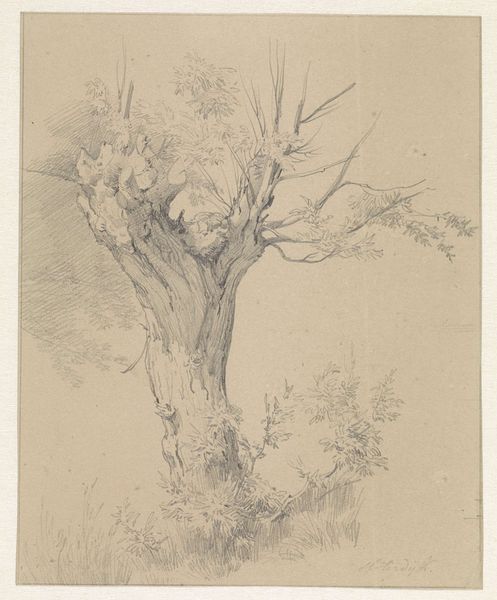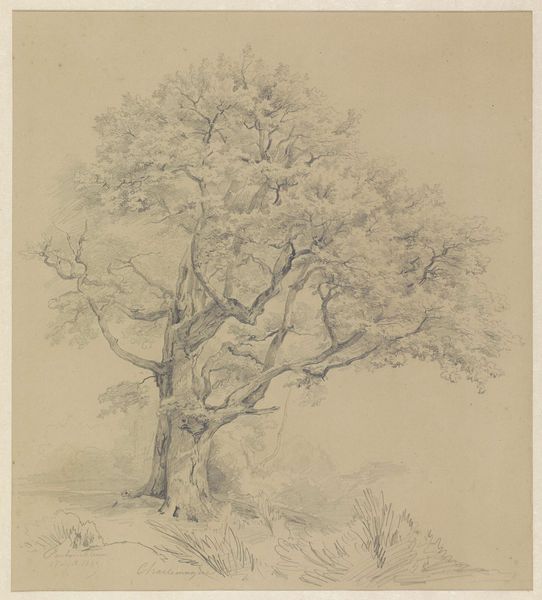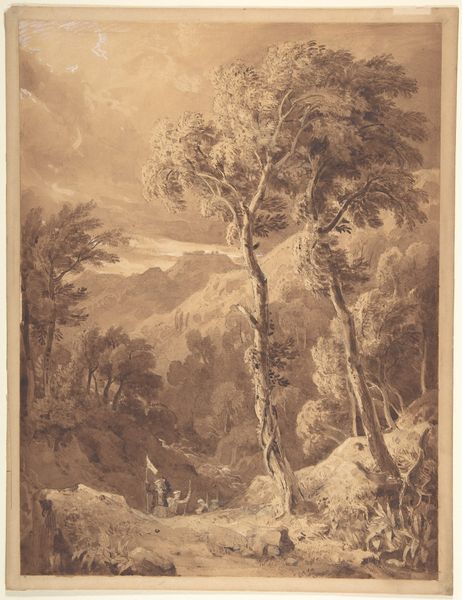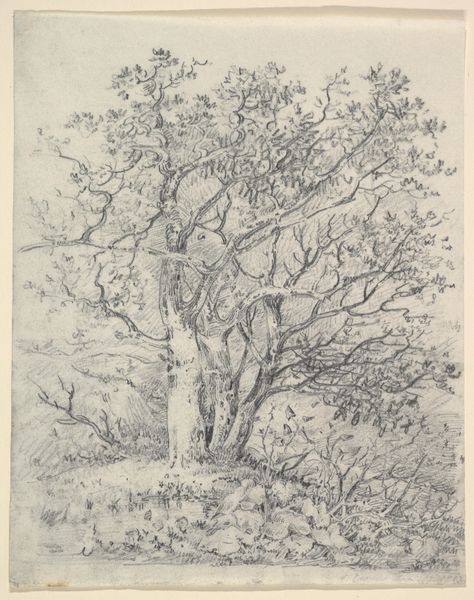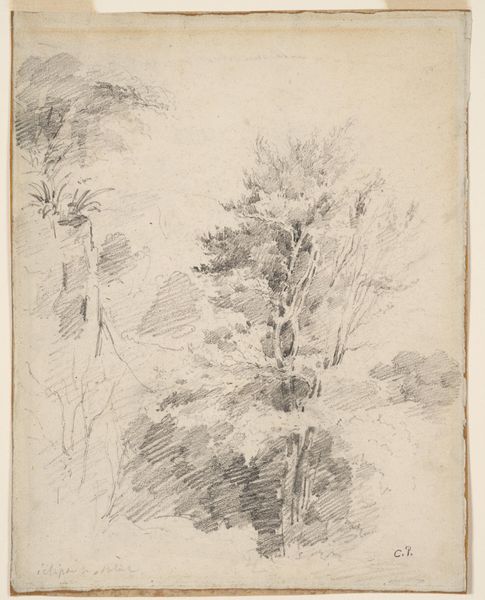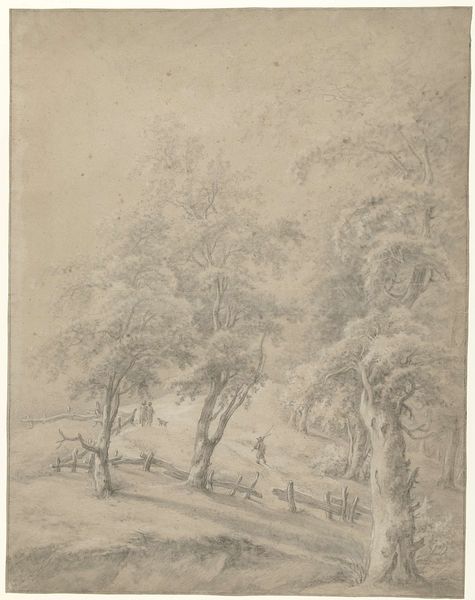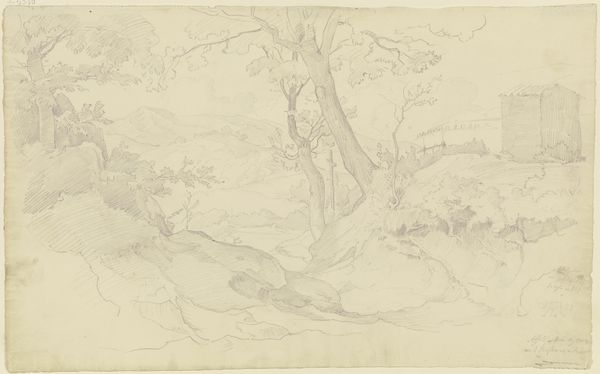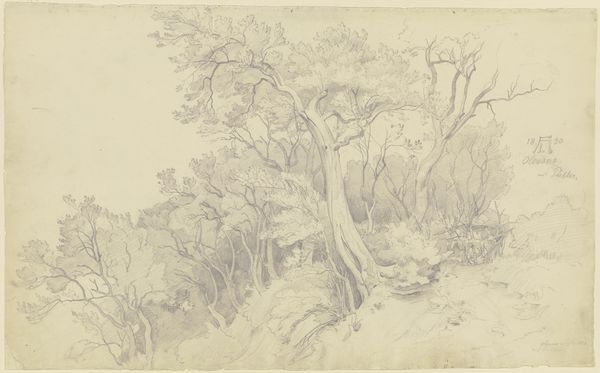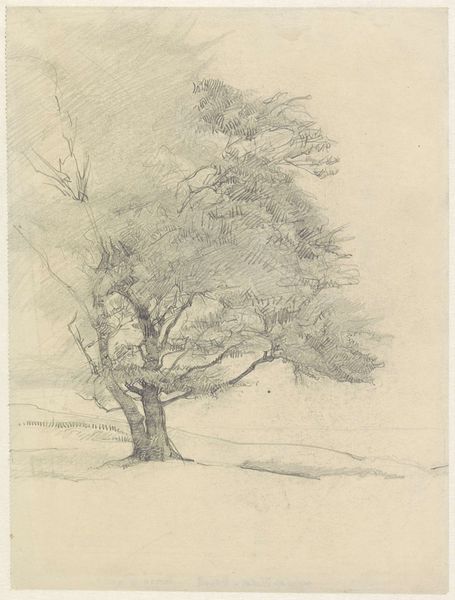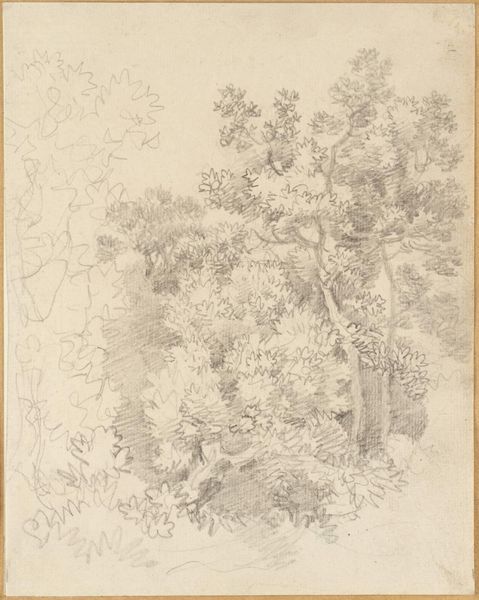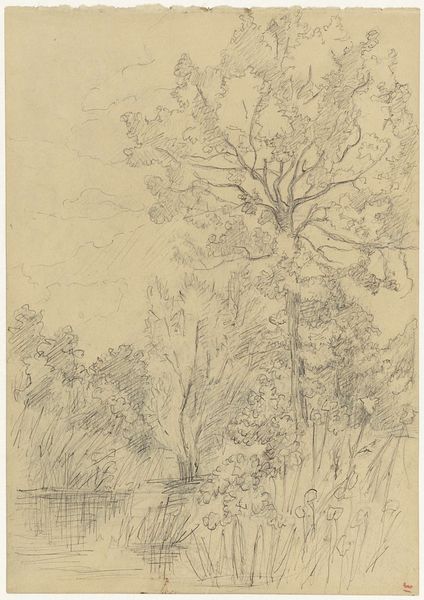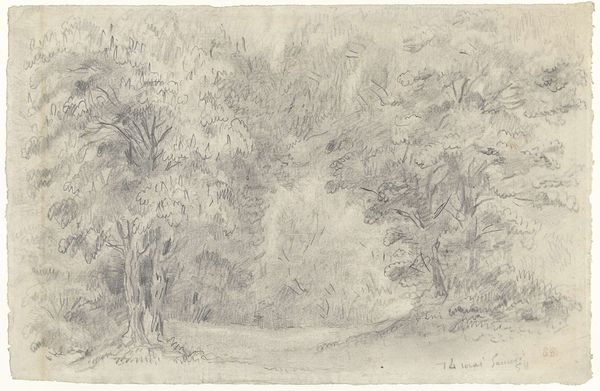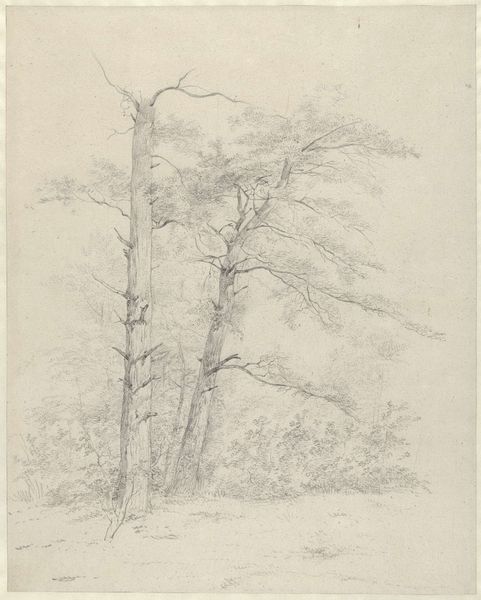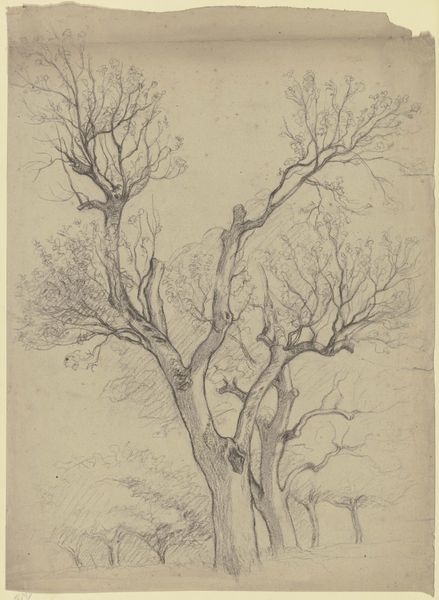
drawing, paper, pencil
#
drawing
#
pencil sketch
#
landscape
#
paper
#
personal sketchbook
#
pencil
#
sketchbook drawing
#
realism
Dimensions: height 446 mm, width 309 mm
Copyright: Rijks Museum: Open Domain
Curator: Here we have "Olive Tree, near Tivoli," a pencil drawing by Pierre Louis Dubourcq, likely created between 1843 and 1845. Editor: The overall impression is one of delicate observation, almost hesitant. The subtle shading creates a hazy atmosphere; I find it dreamlike. Curator: Indeed. Note how Dubourcq utilizes varied densities of graphite to define form and space. The tree in the foreground dominates, its textured bark rendered with precise strokes, contrasted with the lighter touch used for the distant trees, achieving a sense of depth. Editor: Olive trees themselves carry substantial symbolism. They've historically represented peace, hope, and even immortality. Tivoli, with its Roman ruins and rich history, deepens the layers. Dubourcq places the tree in direct sunlight while hinting at shadowy groves nearby, creating visual pathways and a complex network of cultural signifiers. Curator: Interesting. I find that the most striking part is Dubourcq's arrangement of the foliage, see how he builds it through repeated strokes of differing value. It appears that the organization of light is key to reading and interpreting the landscape and naturalistic subject of the sketch. Editor: I’d argue that Dubourcq wasn’t simply interested in optical truth but in capturing a specific emotional quality. Notice how he makes subtle changes in shade, which I argue invite contemplation and even a slight melancholic feeling of loss. The olive tree is more than just a tree here. Curator: That reading adds depth to what at first glance appeared to be simply a representational study. The strength in his compositional arrangement can truly highlight such emotional nuance. Editor: Exactly. What starts as observation transforms into reflection. Curator: A wonderful interplay between technique and symbolic depth. It’s impressive how much Dubourcq conveys in what could otherwise be simply considered a study of form.
Comments
No comments
Be the first to comment and join the conversation on the ultimate creative platform.
